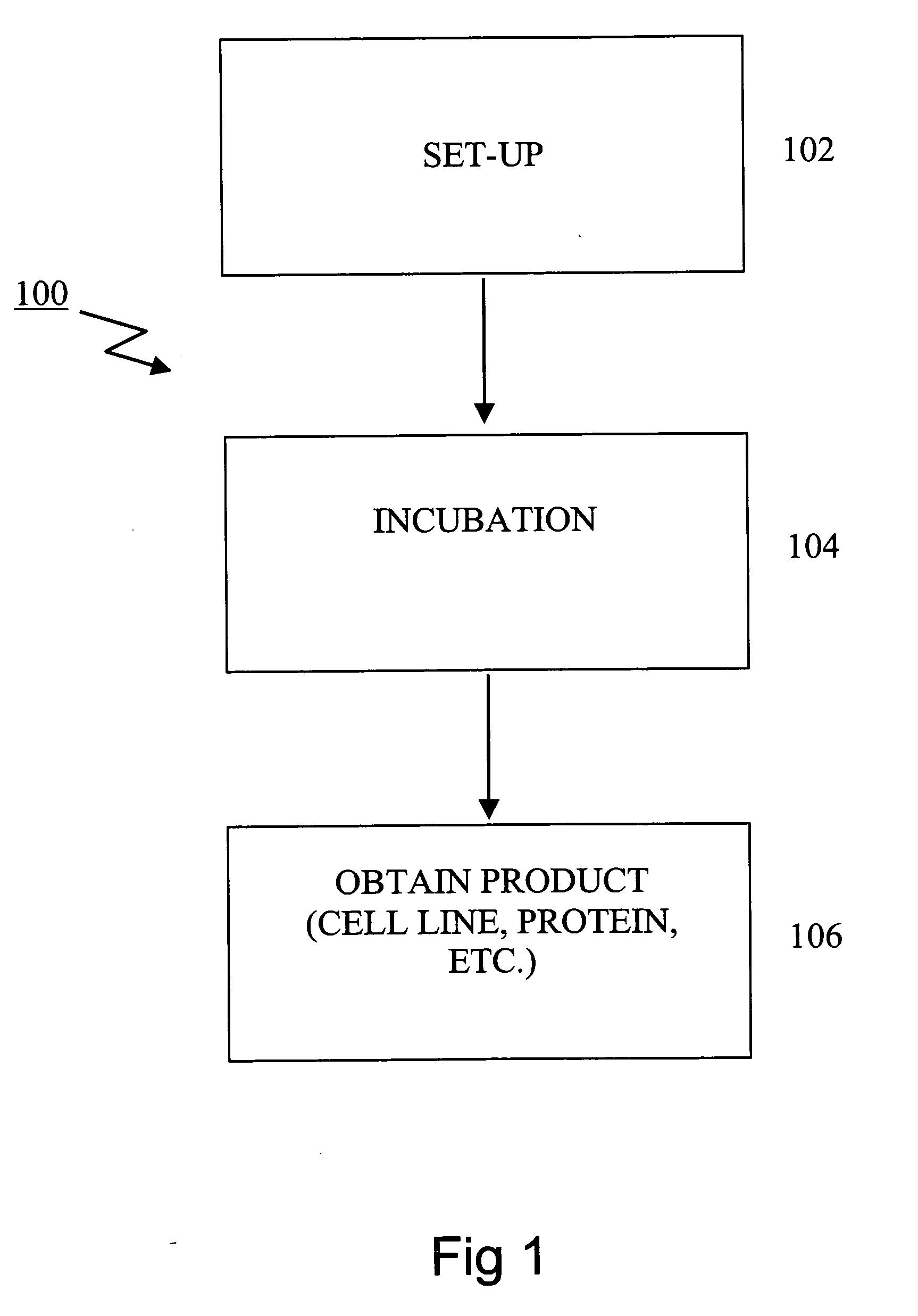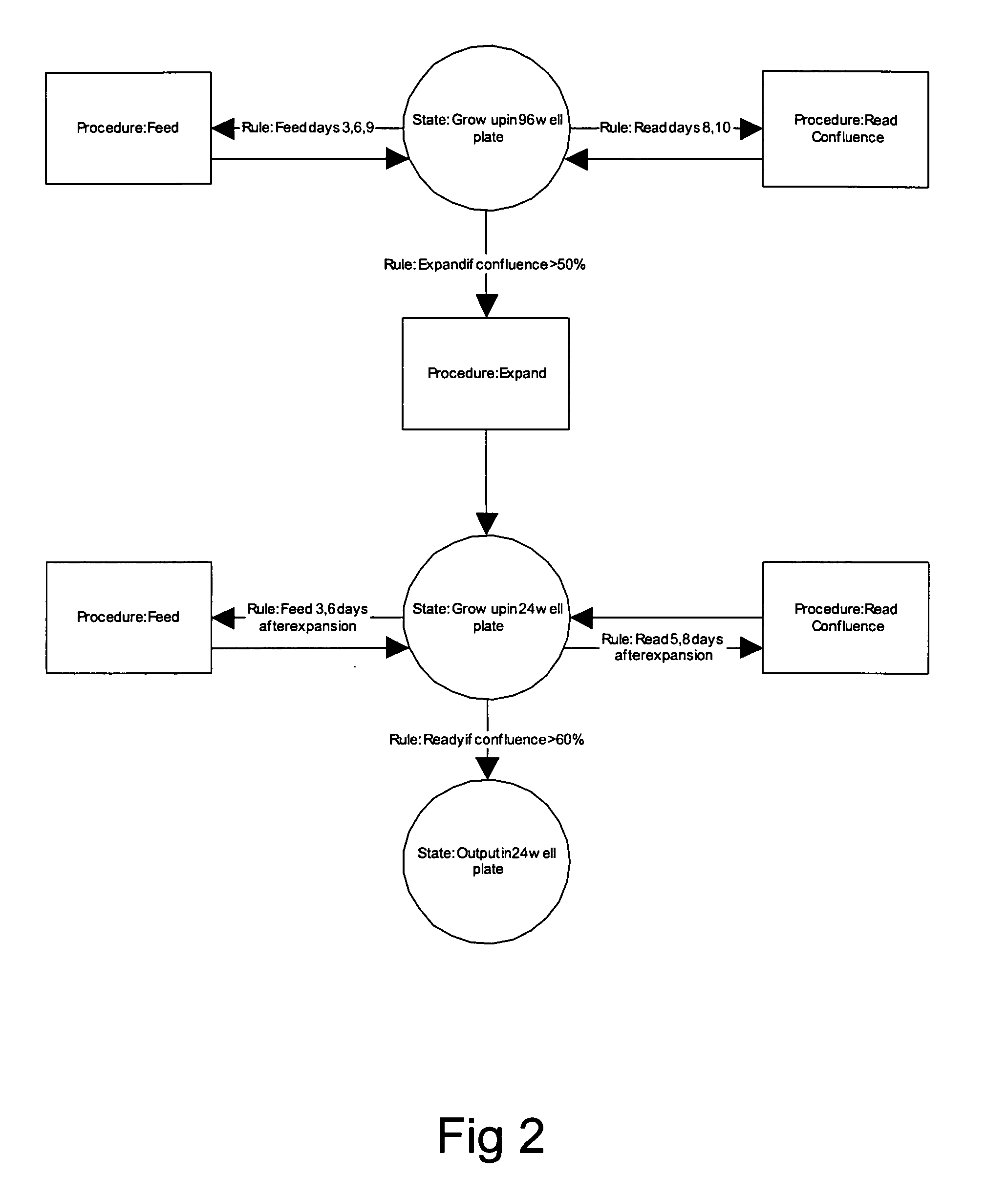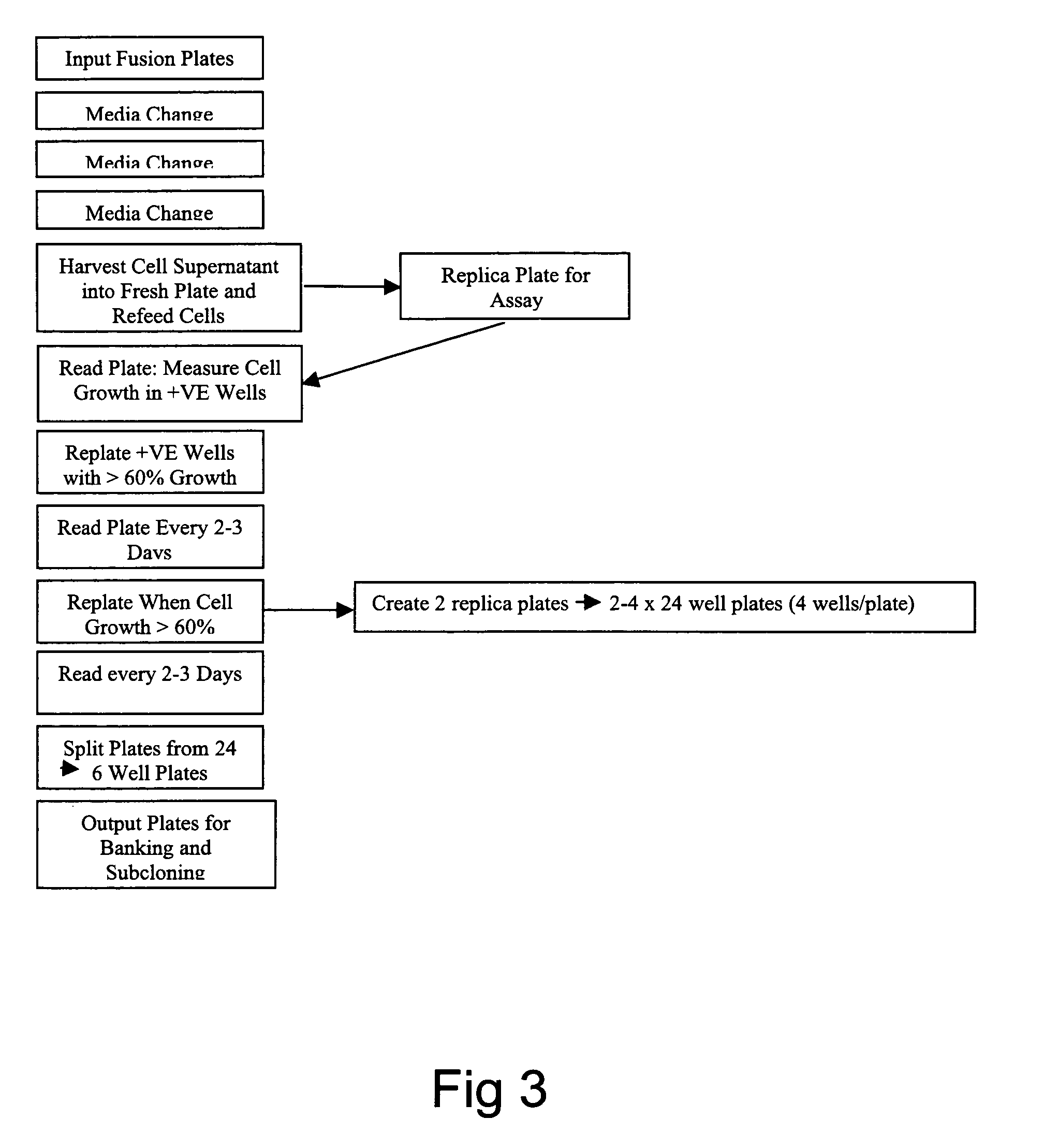Smart cell culture
a cell culture and intelligent technology, applied in the field of smart cell culture, can solve the problems of inability to control the process, time-consuming and laborious use of manual techniques, and inability to manage and control the process, and achieve the effect of efficient utilisation of the system's automation resources
- Summary
- Abstract
- Description
- Claims
- Application Information
AI Technical Summary
Benefits of technology
Problems solved by technology
Method used
Image
Examples
embodiment
[0183]FIG. 13 shows a plan view of a preferred embodiment of the invention. The system here includes two incubators 1302,1304, an input / output and storage module 1306, a testing module 1316, a manipulator module 1312,1308, two liquid handling modules 1318,1320, and a workflow management module 1310,1314.
Incubators and I / O Modules
[0184] Each of the two incubators has a capacity of a few hundred medium-depth plates (where medium depth corresponds to a depth of up to 26 mm). Plates are located in batches referred to as “hotels”. The hotels are, in turn, mounted in receiving positions on a rotating carousel within the incubator. All receiving positions in the incubators are equivalent and all are suitable for holding plates in a large range of standard formats. Software components of the workflow module keep sets of plates together, wherever possible, to simplify operator handling.
[0185] Each incubator is provided with an internal bar code scanner, which automatically scans the comp...
PUM
| Property | Measurement | Unit |
|---|---|---|
| depth | aaaaa | aaaaa |
| volume | aaaaa | aaaaa |
| processing capacity | aaaaa | aaaaa |
Abstract
Description
Claims
Application Information
 Login to View More
Login to View More - R&D
- Intellectual Property
- Life Sciences
- Materials
- Tech Scout
- Unparalleled Data Quality
- Higher Quality Content
- 60% Fewer Hallucinations
Browse by: Latest US Patents, China's latest patents, Technical Efficacy Thesaurus, Application Domain, Technology Topic, Popular Technical Reports.
© 2025 PatSnap. All rights reserved.Legal|Privacy policy|Modern Slavery Act Transparency Statement|Sitemap|About US| Contact US: help@patsnap.com



